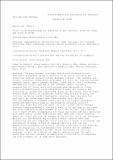| dc.contributor.author | Gaspar, Diana | |
| dc.contributor.author | Peixoto, Rita | |
| dc.contributor.author | De Pieri, Andrea | |
| dc.contributor.author | Striegl, Britta | |
| dc.contributor.author | Zeugolis, Dimitrios I. | |
| dc.contributor.author | Raghunath, Michael | |
| dc.date.accessioned | 2020-04-21T12:49:20Z | |
| dc.date.issued | 2019-06-19 | |
| dc.identifier.citation | Gaspar, Diana, Peixoto, Rita, De Pieri, Andrea, Striegl, Britta, Zeugolis, Dimitrios I., & Raghunath, Michael. (2019). Local pharmacological induction of angiogenesis: Drugs for cells and cells as drugs. Advanced Drug Delivery Reviews, 146, 126-154. doi:https://doi.org/10.1016/j.addr.2019.06.002 | en_IE |
| dc.identifier.issn | 1872-8294 | |
| dc.identifier.uri | http://hdl.handle.net/10379/15896 | |
| dc.description.abstract | The past decades have seen significant advances in pro-angiogenic strategies based on delivery of molecules and cells for conditions such as coronary artery disease, critical limb ischemia and stroke. Currently, three major strategies are evolving. Firstly, various pharmacological agents (growth factors, interleukins, small molecules, DNA/RNA) are locally applied at the ischemic region. Secondly, preparations of living cells with considerable bandwidth of tissue origin, differentiation state and preconditioning are delivered locally, rarely systemically. Thirdly, based on the notion, that cellular effects can be attributed mostly to factors secreted in situ, the cellular secretome (conditioned media, exosomes) has come into the spotlight. We review these three strategies to achieve (neo)angiogenesis in ischemic tissue with focus on the angiogenic mechanisms they tackle, such as transcription cascades, specific signalling steps and cellular gases. We also include cancer-therapy relevant lymphangiogenesis, and shall seek to explain why there are often conflicting data between in vitro and in vivo. The lion's share of data encompassing all three approaches comes from experimental animal work and we shall highlight common technical obstacles in the delivery of therapeutic molecules, cells, and secretome. This plethora of preclinical data contrasts with a dearth of clinical studies. A lack of adequate delivery vehicles and standardised assessment of clinical outcomes might play a role here, as well as regulatory, IP, and manufacturing constraints of candidate compounds; in addition, completed clinical trials have yet to reveal a successful and efficacious strategy. As the biology of angiogenesis is understood well enough for clinical purposes, it will be a matter of time to achieve success for well-stratified patients, and most probably with a combination of compounds. | en_IE |
| dc.description.sponsorship | The authors would like to acknowledge the following for financial support: DG and DZ to
Science Foundation Ireland (SFI) Career Development Award (15/CDA/3629), RP and DZ to
Science Foundation Ireland (SFI) Centre for Research in Medical Devices (CÚRAM) Grant
Number: 13/RC/2073, ADP and DZ to H2020, Marie Skłodowska-Curie Actions, Innovative
Training Networks 2015 Tendon Therapy Train project (Grant No. 676338); and MR to
Swiss Biotechnet. | en_IE |
| dc.format | application/pdf | en_IE |
| dc.language.iso | en | en_IE |
| dc.publisher | Elsevier | en_IE |
| dc.relation.ispartof | Advanced Drug Delivery Reviews | en |
| dc.rights | Attribution-NonCommercial-NoDerivs 3.0 Ireland | |
| dc.rights.uri | https://creativecommons.org/licenses/by-nc-nd/3.0/ie/ | |
| dc.subject | Angiogenesis | en_IE |
| dc.subject | Vascularisation | en_IE |
| dc.subject | Drug delivery | en_IE |
| dc.subject | Cell therapy | en_IE |
| dc.subject | Secretome | en_IE |
| dc.subject | Small compounds | en_IE |
| dc.subject | Cellular gases | en_IE |
| dc.subject | Progenitor cells | en_IE |
| dc.subject | Endothelial cells | en_IE |
| dc.subject | Prolyl hydroxylase | en_IE |
| dc.title | Local pharmacological induction of angiogenesis: drugs for cells and cells as drugs | en_IE |
| dc.type | Article | en_IE |
| dc.date.updated | 2020-04-20T16:12:06Z | |
| dc.identifier.doi | 10.1016/j.addr.2019.06.002 | |
| dc.local.publishedsource | https://doi.org/10.1016/j.addr.2019.06.002 | en_IE |
| dc.description.peer-reviewed | peer-reviewed | |
| dc.contributor.funder | Science Foundation Ireland | en_IE |
| dc.contributor.funder | Horizon 2020 | en_IE |
| dc.description.embargo | 2020-06-19 | |
| dc.internal.rssid | 20707169 | |
| dc.local.contact | Andrea De Pieri, Centre For Research In Medical Devices , Biomedical Sciences Building, Newcastle Road, Dangan, Galway, Nui Galway. Email: a.depieri1@nuigalway.ie | |
| dc.local.copyrightchecked | Yes | |
| dc.local.version | DRAFT | |
| dcterms.project | info:eu-repo/grantAgreement/SFI/SFI Career Development Award/15/CDA/3629/IE/Tissue Engineered Nanoassemblies _ Advanced Biomimicry of Living Equivalents (Short Title: TENABLE)/ | en_IE |
| dcterms.project | info:eu-repo/grantAgreement/SFI/SFI Research Centres/13/RC/2073/IE/C�RAM - Centre for Research in Medical Devices/ | en_IE |
| dcterms.project | info:eu-repo/grantAgreement/EC/H2020::MSCA-ITN-ETN/676338/EU/Engineering in vitro microenvironments for translation of cell-based therapies for tendon repair/Tendon Therapy Train | en_IE |
| nui.item.downloads | 573 | |


